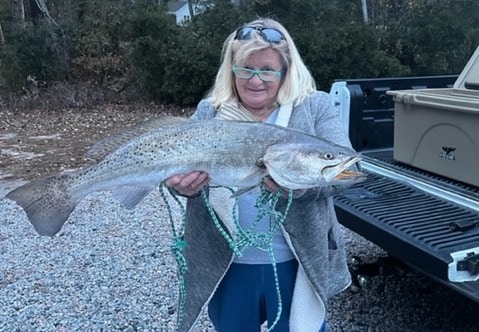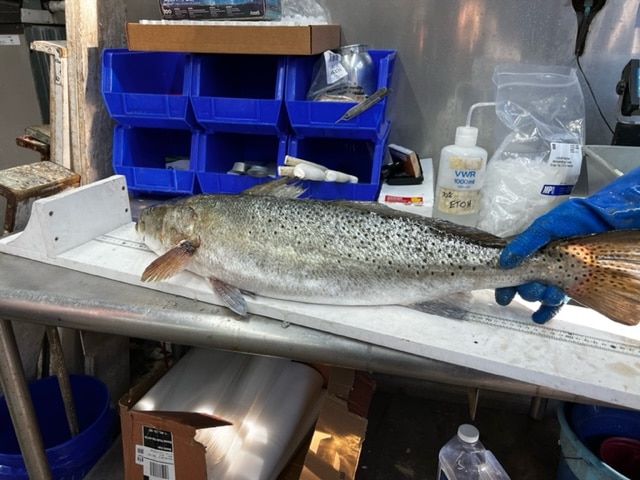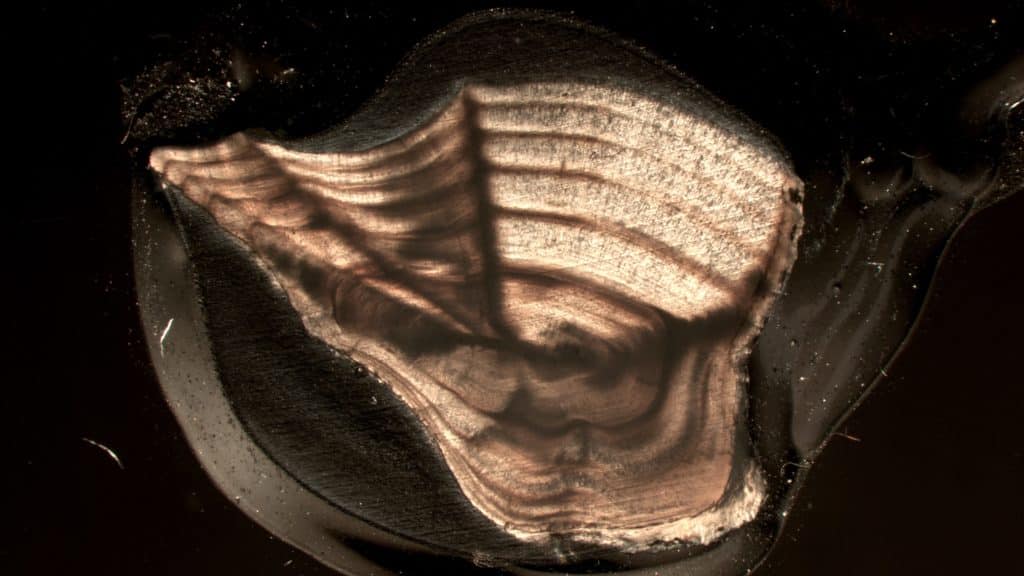
The juvenile menhaden are clearing out of the North Carolina estuaries with winter’s approach. Cathy Jones, of Belhaven, catches them with a castnet for bait. On November 20, she was down to one of the last of the season — and she made it count.
“I saw a swirl, because the [bait] had come to the surface, and I heard the popping sound you hear when the fish grabs the bait,” she recalled. The fight was on, and Cathy battled the behemoth trout on an Ugly Stik fitted with a Daiwa spinner spooled with 20-pound test monofilament. Fifteen minutes later Cathy reached down and hoisted a 33.5-inch, 11-pound, 3-ounce speckled trout onto the dock.
The big speck was close to the North Carolina state record of 12 pounds, 8 ounces, set just this year by Todd Spangler (there’s no women’s division in the state records). It was certified at Eastside Bait and Tackle in nearby Washington, and Cathy has submitted it to the International Game Fish Association for record consideration.
New Record Pending

Speckled trout are a favorite in the Gulf and Atlantic coast states, and they’re usually smaller than Cathy’s catch. She herself is used to catching them in the 18-25-inch range. The current women’s world record taken on 20-pound test line was a 10-pound, 9-ounce specimen caught by Jackie Patton in Banana River, Florida on July 12, 1979. If approved, she will overtake the current record by about 2 pounds.
“Had I caught her in another month, I probably would have been over the state record, because she would have been full of eggs,” she noted. With Cathy’s permission, North Carolina state biologists harvested the trout’s ear bones and stomach to determine its age and what it had been eating.
Her catch was complicated by a couple of matters. For one thing, during the fight, her long-handled landing net fell off the dock, forcing the 63-year-old to grab it by the gill plate. And then there’s the dock itself: it’s 450 feet long. Cathy and her husband, Dr. Alan Jones, a professor at the University of North Carolina at Chapel Hill, built their retirement home on Pungo Creek, a tributary of Pamlico Sound. They needed a dock that long to cross a protected marsh to the open water, where their 18-foot Key West is tied up in season.
“I was exhausted,” she said. “I texted my husband and said, ‘I need you out here now.’ He had to carry the fish back because I was so tired.”
Dr. Jones is still on the job, but Cathy is retired from working in his lab at UNC, and now has an upholstery business — furniture and boats. Meanwhile, with the peanut bunker migrating away, Cathy will switch to using salted grubs on Mirrolure or Gulp jig heads.
Update on Age

At the end of January, biologists with the North Carolina Division of Marine Fisheries analyzed the otolith, or ear bone, from Cathy Jones’ potential world record trout. The scientists counted the annuli, or growth rings, contained in the otolith and determined the fish to be 5 years old. It seems that seatrout grow fast in the Tar Heel State!









